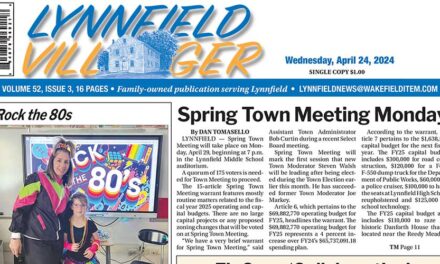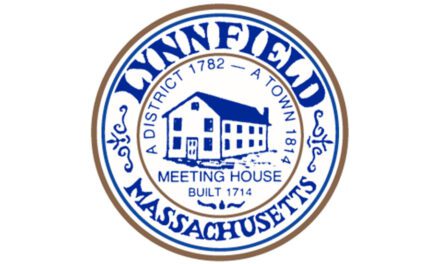Published in the May 16, 2018 edition
By DAN TOMASELLO
LYNNFIELD — Townspeople will have an opportunity to weigh in on National Development’s latest proposal to bring a cinema to MarketStreet Lynnfield next week.
The MarketStreet Advisory Committee (MSAC) is holding a public hearing on the proposal on Thursday, May 24, beginning at 7 p.m. in the Al Merritt Media and Cultural Center.
“Lynnfield residents are invited to share feedback on the potential for a theater proposal from National Development,” said MSAC Chairwoman Jen Bayer in an email sent to the Villager. “For those unable to attend, feedback can be shared via email to msac@town.lynnfield.ma.us.”
The latest proposal for a cinema, which is currently prohibited by the Planned Village Development District (PVDD) agreement, entails building a theater featuring eight screens and 800 seats. The cinema would be located next to Gaslight.
While National Development Managing Partner Ted Tye originally proposed building a parking garage next to California Pizza Kitchen in order to make up for the loss of parking, the firm is considering building the garage behind the cinema if the project moves forward. The development agreement allows a parking garage to be built.
National Development originally proposed constructing a cinema when the project was first conceived as Meadow Walk in 2007, but decided to abandon the proposal in order to win support from abutters. A warrant article submitted in 2009 sought to amend the PVDD in order to build a cinema, but it did not receive the required two-thirds vote at Town Meeting. National Development also proposed building the cinema when the mall was under construction in 2013 and submitted a last minute warrant article in March 2017 that was withdrawn. The last two pitches were met with resistance from a number of residents and local officials.
Tye gave no indication when National Development would submit a Town Meeting warrant article during last week’s MSAC meeting. In order to construct a cinema at MarketStreet, voters would need to approve a warrant article that would amend the development agreement. Tye noted the PVDD allows 395,000 square feet of retail space and 80,000 square feet of office space to be built, totaling 475,000 square feet. Under National Development’s latest proposal, Tye wants to reduce the 80,000 square feet of office space to 40,000 square feet. In turn, a cinema just less than 40,000 square feet would be built.
“The overall size of the project will not increase,” said Tye.
Tye and National Development representatives have been discussing the cinema proposal during MSAC meetings since February. In response to a recent question from Alexandra Road resident Joe DeMaina, who was not present at last week’s meeting, Tye argued the cinema proposal does not meet the legal criteria for “spot zoning.”
“Spot zoning only occurs when there is a ‘singling out of one lot for different treatment from that accorded to similar surrounding land indistinguishable from it in character, (and) all for the economic benefit of the owner of the lot,’” said Tye while reading a legal definition of spot zoning. “If there is any public benefit, a rezoning cannot be spot zoning even if a private landowner will derive some benefit.”
Tye encouraged MSAC members to get further input on the issue from Town Counsel Tom Mullen.
The managing partner said the cinema would be a two-story building. He said the theater would need to comply with the outdoor mall’s design standards.
“This will ultimately be kicked to the Planning Board if it goes ahead,” said Tye. “The Planning Board would be involved with the specific design.”
Tye also noted National Development wants to meet with Police Chief David Breen to discuss public safety concerns.
Traffic study conducted
VHB traffic engineer Randy Hart gave an overview of a traffic study that was undertaken for the cinema proposal.
Hart noted the traffic study was conducted on a weekday and a Saturday last November. He said the traffic counts were conducted from 4 p.m. to 6 p.m. on the weekday, and 11 a.m. to 2 p.m. on the Saturday.
After conducting the study, Hart said VHB’s report concluded the cinema proposal would have a “negligible” impact on traffic.
“The build-out of the development with the proposed (cinema) is expected to result in a minimal increase of 15 total trips (six entering/nine exiting) during the weekday evening peak hour, and a minimal increase of 29 total trips (26 entering/three exiting) during the Saturday midday peak hour when compared to the approved build-out of the development,” reads VHB’s report. “With the two site access locations and multiple roadways surrounding the development, these trips will quickly dissipate into the roadway network and have a minimal impact to operations when compared to the approved build-out of the development without the proposed modification.”
If the cinema is approved, Hart said National Development is willing to purchase adaptive traffic signal systems that would be installed at the two Route 95 off-ramps and the Walnut Street and Salem Street intersection. VHB’s report stated the system will “allow traffic signals to respond more intelligently to fluctuations in traffic patterns.”
There are adaptive traffic signal systems located on Audubon Road, Pleasure Island Road and Salem Street in Wakefield. Hart also noted the Middlesex Turnpike in Burlington has adaptive traffic signal systems.
“The technology captures real-time traffic demand data to adjust traffic signal timing so that optimal flow in coordinated traffic signal systems can be achieved without manual changes being made to controllers,” reads VHB’s report.
Hart said the traffic signals “are known to reduce delay, increase travel speeds and improve travel times.”
Reaction
Breen said the adaptive traffic signals “would definitely help during normal volume hours,” but said the signals would have a minimal impact during high volume hours.
“You have traffic coming from multiple directions and backed up in every direction,” said Breen. “Even with the adaptive signals, I just don’t think you can move traffic like you can during lower volume hours.”
“You are probably right because there are limitations to everything,” said Hart. “But what it can do is give priorities to certain (locations).”
Breen suggested that the Massachusetts Department of Transportation (MassDOT) construct a right turn lane on the Route 95 South Exit 43 off-ramp.
“Oftentimes, we can’t get to Walnut Street because there are so many vehicles that want to pull straight into MarketStreet,” said Breen. “We have to wait for a couple of lights, and the traffic backs up onto Route 95.”
MSAC member John Gioioso encouraged National Development to install the adaptive traffic signals before bringing a cinema warrant article to Town Meeting.
“I would put the system in now and I would work with the chief to make some investments in widening the roads to show the residents of Lynnfield that you mean business in clearing up the traffic,” said Gioioso.
Fernway resident David Basile said, “It’s extremely difficult to get through” the MarketStreet intersections and he tries his best to avoid the area.
“You lack the perception that we live with by doing one day studies,” said Basile. “The physics of it is that roadway didn’t change much from what it was before this project was built. The pipe has not changed, but the volume has increased considerably.”
Basile argued National Development should hold off on the cinema proposal until the town determines the impact of the new Lahey Health building that is currently under construction.
While serving on the Zoning Board of Appeals, Colonial Village resident David Miller said “none of the traffic studies” undertaken by different developers “ever worked out.”
Durham Drive resident Ellen Crawford said it’s in the town’s best interest to “keep MarketStreet viable.” She noted traffic is a problem on Main Street and Summer Street in addition to Walnut Street.




